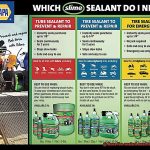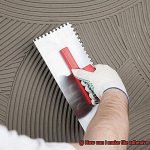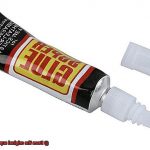We’ve all been there – working on a DIY project or a school assignment, slathering on that trusty white glue mixed with water, and anxiously wondering if it’ll dry clear. The quest for invisible adhesion can be a real head-scratcher, but fret not. In this blog post, we’re diving deep into the nitty-gritty to demystify this age-old question: Does white glue and water dry clear? We’ve got you covered with all the info you need to ensure your crafting adventures stay residue-free. So get ready to explore the fascinating science behind adhesive transparency as we take a laid-back yet informative approach.
Now let’s dig in and uncover the truth about how this popular crafting combo dries.
What is White Glue?
Contents
- 1 What is White Glue?
- 2 Does White Glue Dry Clear?
- 3 Factors That Influence Whether White Glue and Water Dry Clear
- 4 How to Ensure That White Glue and Water Dry Clear
- 5 The Ratio of Glue to Water
- 6 The Thickness of the Adhesive Layer
- 7 The Type of Surface Being Glued
- 8 Testing the Mixture on a Sample Before Applying it to the Final Project
- 9 Conclusion
When it comes to arts and crafts or DIY projects, having a reliable adhesive is essential. Enter white glue, also known as school glue or PVA glue. In this blog post, we will embark on a journey to explore the wonders of white glue – its composition, unique properties, and how it can be used effectively to create a clear and professional finish in your projects.
White glue is a water-based adhesive that serves as a versatile solution for arts and crafts projects, as well as household repairs. Its liquid form boasts a milky white appearance, giving it its name. What makes white glue so special is its non-toxic and safe nature, making it suitable for crafters of all ages.
Key Features of White Glue:
- Dries Clear: One of the standout features of white glue is its remarkable ability to dry clear. Initially white and wet, this adhesive transforms into a transparent and glossy finish as it dries. This magical property makes white glue an ideal choice when you want the adhesive to remain invisible in your projects.
- Strong Bond: White glue has been specifically formulated to bond porous materials such as paper, cardboard, fabric, wood, and certain plastics. By penetrating the fibers or pores of these materials, white glue establishes a strong bond once dried. It ensures that your creations withstand the test of time.
- Longer Open Time: Unlike some other adhesives, white glue offers a longer open time. This means that it remains workable for an extended period before drying completely. With white glue, you have the flexibility to adjust and reposition your materials during the gluing process, ensuring precision and perfection in your work.
- Water-Soluble: When wet, white glue is water-soluble, making cleanup effortless. Any excess glue or spills can be easily wiped away with water before it dries, saving you from the hassle of stubborn residue. With white glue, you can focus on your creativity without worrying about the mess.
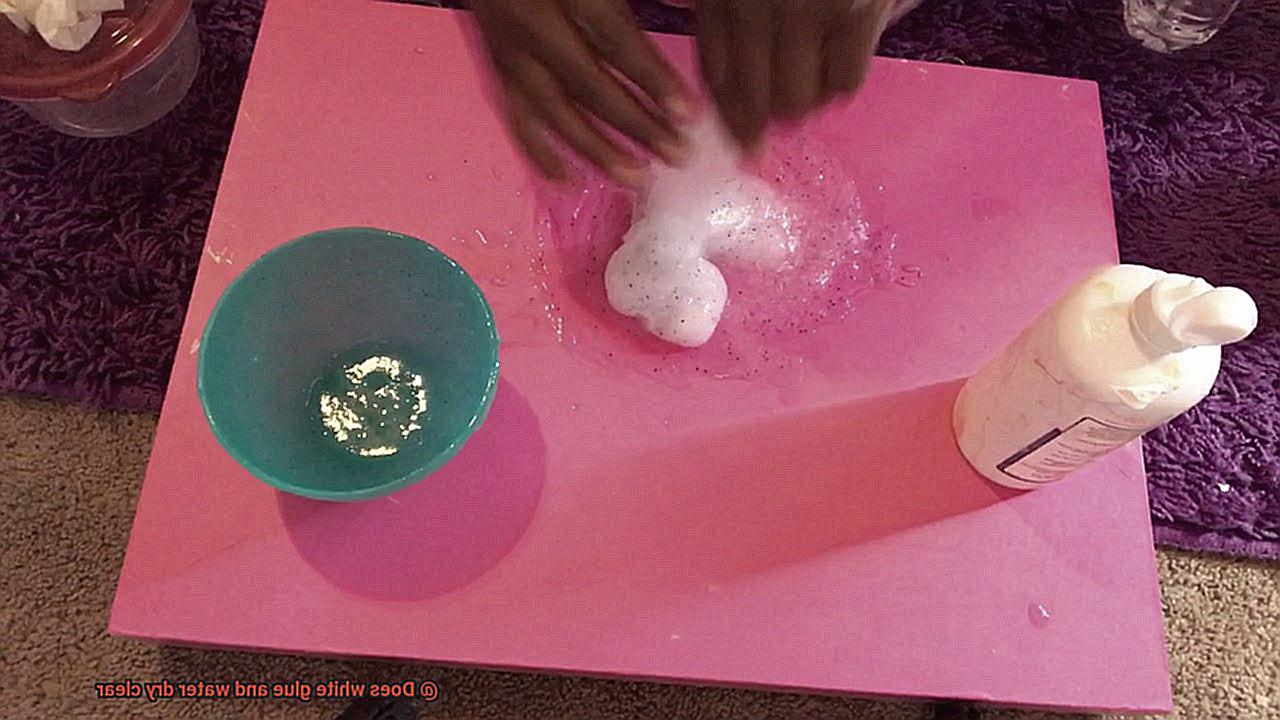
Tips for Using White Glue Effectively:
- Apply thin, even layers of glue to minimize visible residue and achieve a clear drying result.
- Test the glue mixture on a small sample before applying it to your final project, especially if you are unsure of the surface’s absorbency.
- Gradually add water to the glue while stirring to achieve the desired consistency for your project.
- Allow the adhesive to dry completely before making a final judgment on its clarity.

Does White Glue Dry Clear?
Join us as we delve into the captivating properties of this versatile adhesive and explore its magical transformation during the drying phase. Prepare to discover the secrets that will elevate your projects with an invisible bond.
The Science behind White Glue:
White glue, also known as school glue or craft glue, has captivated craft enthusiasts and DIYers for its ease of use and adaptability. At its core, white glue is composed of polyvinyl acetate (PVA), a synthetic polymer that forms a strong bond when it dries. In its initial milky white form, this mystical adhesive undergoes an awe-inspiring metamorphosis as it evaporates water and transforms into a transparent state.
The Drying Process:
As you apply white glue to your project, you’ll notice its opaque appearance. But fear not. Once the water content in the glue evaporates, it sheds its veil of whiteness and reveals a crystal-clear finish. However, patience is essential; full transparency usually takes around 24 hours to achieve. Thinner layers or smaller amounts may dry faster, but allowing ample drying time ensures a robust and invisible bond.
Glossy or Matte?
While white glue undoubtedly dries clear, there’s one thing worth mentioning—certain surfaces may exhibit a subtle sheen or gloss after drying. This effect is more pronounced on darker or glossy materials. If you desire an entirely matte finish, it’s wise to conduct a small test on an inconspicuous area before applying the glue extensively.
Avoiding Cloudiness:
To unlock optimal results, it’s vital to adhere to the manufacturer’s instructions and avoid diluting white glue with excessive water. Adding too much water can lengthen drying time and potentially result in a cloudy or hazy appearance. Unless explicitly recommended, resist the temptation to transform your white glue into a watery concoction.
Factors That Influence Whether White Glue and Water Dry Clear

Prepare to be amazed as we explore the factors that influence whether this magical concoction dries clear. Get ready to take your projects to the next level.
Composition of the Glue:
First, let’s talk about the secret ingredient – white glue, also known as PVA glue. Its composition holds the key to achieving clarity when dry. Different brands and types of white glue may have subtle variations in their formulation. Some may contain additives or fillers that can leave the dried adhesive looking cloudy or even slightly yellowish. So, choose a high-quality white glue for optimal transparency.
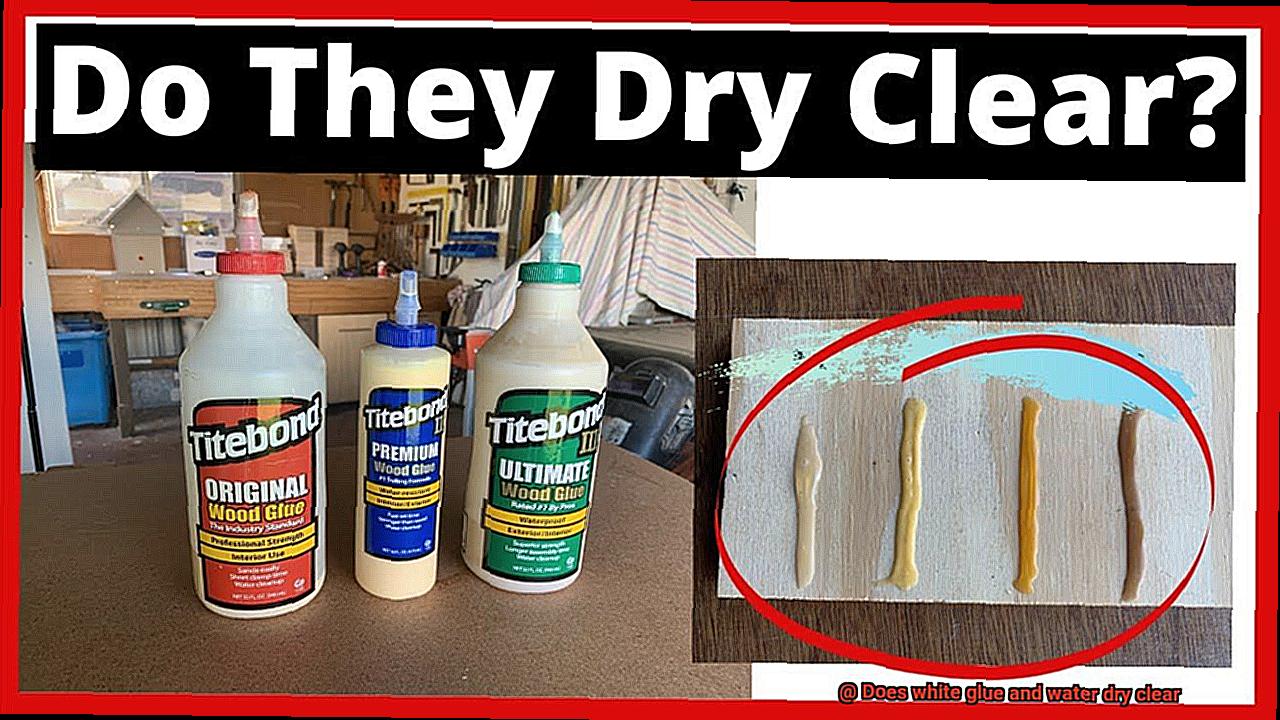
Ratio of Glue to Water:
Finding the perfect balance between glue and water is essential for a crystal-clear finish. Diluting white glue with water creates a thinner consistency that is easier to work with. However, be cautious not to add too much water, as it can impact the drying process and result in a less clear finish. Experiment with different ratios until you find the sweet spot that suits your project.
Drying Time and Conditions:
Patience is key when it comes to drying white glue and water mixtures. The drying time and conditions play a crucial role in achieving transparency. Higher temperatures and lower humidity levels generally facilitate faster drying, contributing to a clearer finish. So, find a well-ventilated area with optimal temperature and humidity for quicker, clearer results.
Application Technique:
The way you apply the white glue and water mixture onto your surface can make a difference in the clarity of the dried adhesive. Uneven application or excessive pooling can result in inconsistencies during the drying process, leading to areas that may appear less clear compared to others. Take your time, apply the mixture evenly, and spread it thinly for a more uniform and transparent finish.
Type of Surface:
Surfaces matter. The type of surface onto which you apply the white glue and water mixture can impact its clarity when dry. Porous surfaces, such as paper or fabric, tend to absorb the adhesive more readily, resulting in a clearer finish. Non-porous surfaces like plastic or glass may not allow the adhesive to penetrate as effectively, potentially leading to a less clear appearance. Choose your surface wisely.
Quality of Materials:
Last but not least, the quality of both the white glue and water used can affect the final clarity of your project. Using top-notch materials ensures there are no impurities that could interfere with the drying process and result in a less transparent finish. Invest in high-quality glue and pure water for the best results.
How to Ensure That White Glue and Water Dry Clear

In this guide, we will walk you through the step-by-step process to ensure that your glue and water combination dries transparently. Get ready to unleash your creativity without worrying about cloudy glue.

The Perfect Proportions:
To begin, mix white glue and water in a 1:1 ratio. This creates a thin, transparent mixture that is more likely to dry clear. Remember, a little goes a long way.
Quality Matters:
Using high-quality, clear-drying glue is crucial for achieving transparent results. Cheaper options may leave behind a cloudy or yellowish residue. Invest in quality products for the best outcome.
Prepare for Perfection:

Before applying the mixture, prepare your surface properly. Thoroughly clean it, ensuring it’s dry and free from any dust or debris. This helps the glue adhere better and prevents unwanted particles from interfering with the drying process.

Brush It Smooth:
For an even application, use a brush or sponge applicator to spread the glue mixture. Avoid using too much glue, as it can take longer to dry and lead to a cloudy finish. A thin layer should suffice for most projects.
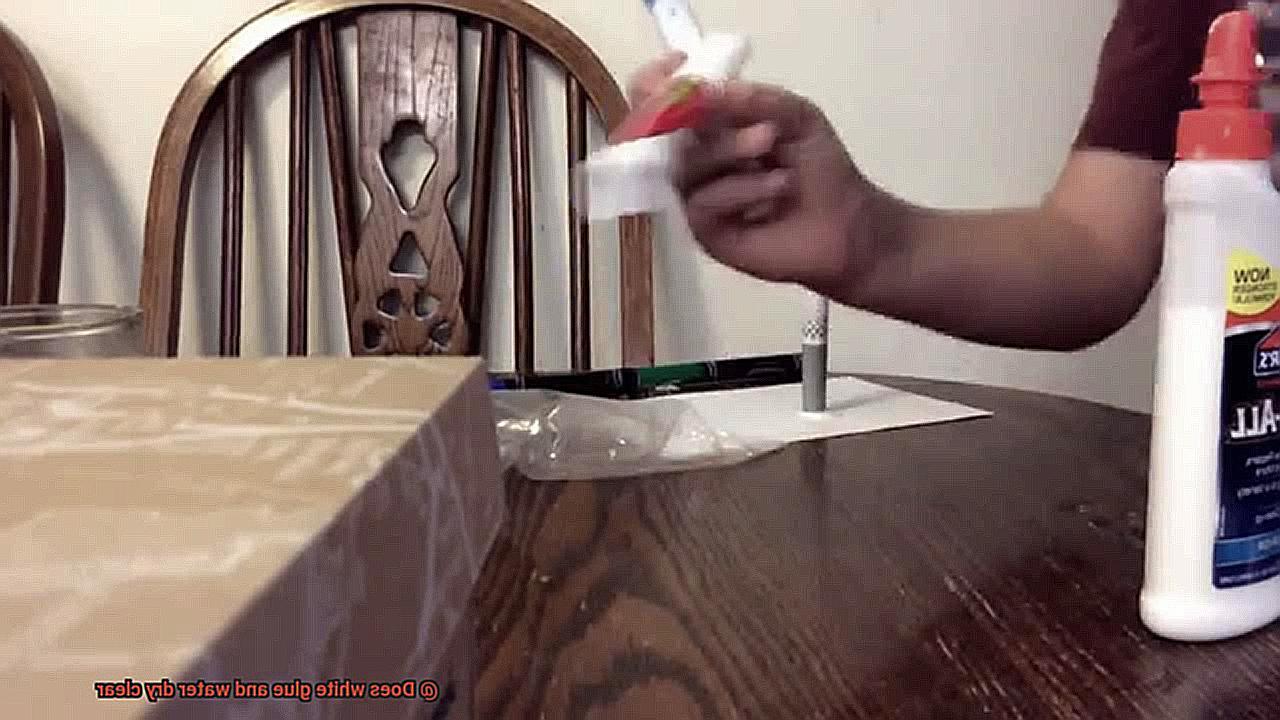
Patience is Key:
Allow ample time for the glue to dry completely. The drying time varies based on humidity and temperature, but waiting at least 24 hours ensures a clear finish. Avoid touching or disturbing the glued surface during this time to prevent smudging or uneven drying.
The Ratio of Glue to Water
The ratio of glue to water is a crucial factor in achieving that perfect clear drying result for your DIY projects. Picture this: you’re in your creative zone, ready to bring your vision to life, and mixing up a batch of glue and water. But hold on, before you dive in, let’s explore the ins and outs of this magical ratio.
Experts agree that the ideal ratio for achieving a clear drying result is a 1:1 ratio of white glue to water. However, it’s important to note that different brands of glue may have slightly different requirements. So, always double-check the instructions provided by the manufacturer to avoid any mishaps.
Now, let’s talk about the consequences of going overboard with the water or glue. Adding too much water will thin out the mixture, resulting in a cloudy dry. On the flip side, adding too much glue will make the mixture thick and could also lead to a cloudy finish. We’re aiming for that sweet spot where your project shines with clarity.
But wait, there’s more. The environment plays a role too. To achieve optimal results, allow your masterpiece to dry in a well-ventilated area with moderate temperature and humidity levels. This will help ensure that your final product dries crystal clear, without any unwanted cloudiness.
And one last thing – application matters. Avoid going overboard with the glue mixture as it can lead to puddles or uneven drying. Smooth and steady wins the race here.
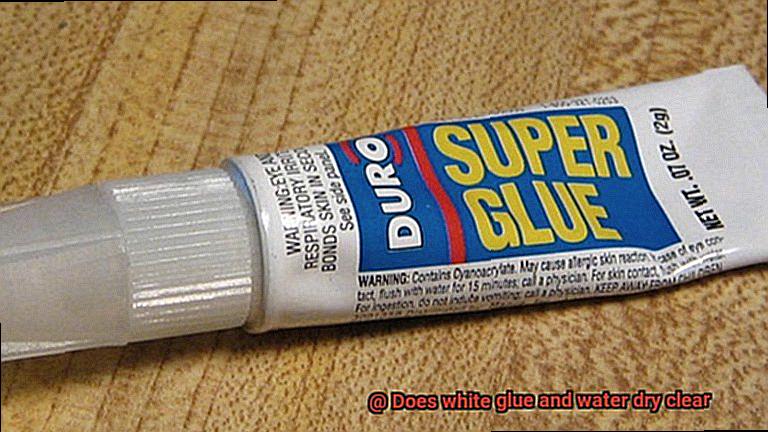
The Thickness of the Adhesive Layer
Today, we embark on a journey to uncover the secret behind achieving that elusive clear drying effect with white glue and water. Whether you’re a seasoned DIYer or a curious beginner, this article will equip you with the knowledge to make your projects shine with clarity. So, grab your glue bottles and let’s dive in.
The Thickness Factor:
In the realm of adhesive mastery, the thickness of the adhesive layer reigns supreme. Picture this: applying a thin layer of white glue and water mixture allows for a dance between evaporation and transparency. As water evaporates at a faster pace, it leaves behind a crystal-clear finish. Conversely, a thick layer can trap water within the glue’s clutches, leading to cloudiness or frustrating streaks. To achieve optimal clarity, aim for a thin and even application.
The Golden Ratio:
Ah, the secret formula that whispers brilliance into your projects – the golden ratio of white glue to water. Experts agree that a 1:1 ratio is the key to success. However, tread cautiously, for different glue brands may have specific instructions tailored to their unique compositions. Too much water dilutes the mixture, transforming it into a watery mess devoid of clarity. On the other hand, excess glue creates a thick mess that smothers your masterpiece. The golden ratio strikes the perfect balance for brilliance and clarity.
Environmental Factors:
Creating an ideal drying environment is essential for flawless results. Imagine your project basking in a well-ventilated space with moderate temperature and humidity levels. This carefully curated atmosphere thwarts any sneaky attempts by unwanted cloudiness to mar your creation. Remember, patience is key – rushing the drying process can compromise clarity.
Application Matters:
Be forewarned against drowning your project in excessive amounts of the glue mixture. Applying too much can result in puddles or uneven drying, diminishing the clarity of your creation. Instead, opt for a smooth and steady approach when spreading the adhesive layer. Let each stroke be a testament to your precision and artistry.
Experimentation is Key:
Dear artisans, every project is unique, and experimenting with different thicknesses can be an enlightening journey. Treat your imagination to a feast of trial and error by testing various application thicknesses on small samples. In this voyage of discovery, you will uncover the optimal approach for your specific material or project. Embrace the unpredictability and watch as your skills evolve.
The Type of Surface Being Glued
When it comes to gluing, the type of surface you’re working with can make all the difference in achieving a clear and professional finish. Let’s explore the different surfaces and how they react to white glue and water mixture.
- Paper: Ah, the beloved canvas for all your creative endeavors. Thankfully, when it comes to paper, white glue is your best friend. Its thin consistency allows it to seep into the fibers of the paper, creating a strong bond without any visible residue. So go ahead and scrapbook to your heart’s content, knowing that your glue will dry clear and showcase your beautiful creations.
- Wood: Wood is a versatile material used in many crafting projects, but it requires a little more attention when gluing. While white glue and water can be used on wood, there might be some visible residue after drying. This is because wood is porous and can absorb some of the glue mixture. But don’t fret. A quick sanding or a coat of paint can easily remedy this, ensuring a smooth and clear finish for your wooden masterpieces.
- Plastic: Ah, plastic surfaces…they can be a bit tricky when it comes to gluing. Some plastics are simply not compatible with white glue and water mixture, resulting in poor bonding and unclear drying. To achieve a transparent finish on plastic, it is crucial to choose an adhesive specifically designed for bonding plastic surfaces. Remember, not all glues are created equal when it comes to plastic.
- Metal: Last but not least, let’s talk about metal surfaces. While white glue and water may work for certain metals, they may not provide a strong or clear bond on all types of metal. Metals such as aluminum or stainless steel may require specialized adhesives formulated specifically for metal bonding. So if you’re working with metal, make sure to choose the right glue for the job.
Testing the Mixture on a Sample Before Applying it to the Final Project
Today, we’re delving into the crucial practice of testing the white glue and water mixture on a sample piece before applying it to your final project. Trust me when I say that this step is an absolute game-changer.
Picture this: you’ve poured your heart and soul into creating a masterpiece, painstakingly gluing all the components together, only to discover later that the glue has dried with an unsightly cloudy finish. Talk about a devastating blow. But fear not, my friends, because testing the mixture on a sample piece can spare you from such heartbreak.
So, let’s get down to business. Grab a small piece of the same material or surface that you’ll be using for your final project. Whether it’s paper, wood, plastic, or even metal, find a sample that matches your project. Mix your white glue and water in the desired ratio (typically equal parts) and apply a thin layer of the mixture onto your sample piece. Allow it to dry completely.
Now comes the moment of truth. Examine your sample piece with eagle eyes. Does the glue dry clear and transparent? Or does it leave behind an annoying residue or discoloration? If it’s the former, congratulations are in order. Your glue and water mixture is good to go for your final project. However, if it’s the latter, it’s time to make some adjustments.
Keep in mind that different surfaces may react differently to glue, so testing your specific brand and type is absolutely crucial. It’s all about discovering that magical combination that will give you the transparent finish you desire.
By taking the time to test the mixture on a sample piece, you’re ensuring that your final project will turn out exactly as you envisioned. No more surprises or disappointments. So don’t even think about skipping this step, my fellow crafters. Trust me when I say that it’s absolutely worth every minute.
t7IeITfq0eI” >
Also Read: Is Elmer’s Glue Waterproof?
Conclusion
In conclusion, the combination of white glue and water does indeed dry clear.
Whether you’re working on a collage, creating a homemade slime recipe, or sticking together delicate paper cutouts, this adhesive solution will dry without leaving any unsightly residue or discoloration.



